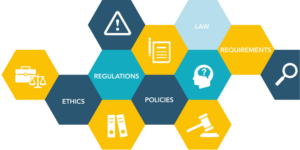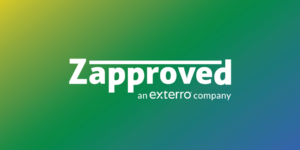When it comes to litigation readiness, time is of the essence. The faster you can issue a legal hold in response to a trigger event, the faster you can ensure the preservation of potentially relevant evidence. And that legal hold process must be consistent, repeatable, and well documented to be readily defensible in court. That’s why advance preparation and automated tools are a boon to ediscovery professionals.
In our eight-part blog series about best practices in litigation readiness, we’re covering the key improvements that any organization can make to prepare ahead of time for potential litigation. So far, we’ve discussed data mapping, policies, and people. Now, with this sixth best practice, we’re shifting the focus onto your tools, specifically your legal hold software. If you’re asking, “What legal hold software?,” then read on!
Manual Systems Are Inadequate for Managing Legal Holds
There’s no sugar-coating it: if you’re still using a manual system of emails and spreadsheets to issue legal holds and monitor compliance, you’re needlessly introducing risks and wasting valuable time. Emails and spreadsheets are great tools for plenty of jobs, but managing data preservation and legal holds aren’t on that list.
Sixth in a series of best practices for litigation readiness.
These manual processes are slow, tedious, and prone to errors. That inconsistency makes them hard to explain and defend in court. To make matters worse, hastily composed legal holds increase the likelihood of spoliation, as they may be unclear, too long, or confusing, making it difficult for custodians to understand and comply with them.
Automated Legal Hold Software Saves Time
With an automated legal hold solution, you can avoid the disadvantages of a manual approach. Today’s software makes it simple and fast to select a clear and concise hold template, send it to data custodians, and track their responses automatically.
And with a cloud-based system, it’s just as easy from the custodians’ perspective to acknowledge the hold and implement it from any device anywhere in the world. Best of all, automated legal hold software with a built-in audit trail capability can summarize every step you took in just seconds, allowing you to demonstrate your defensible hold practices to any court.
Top Tips for Implementing an Automated Hold Solution
- Create hold templates in advance. For rapid deployment of a hold notice, work with your attorneys and other stakeholders to create clear, readable legal hold templates in advance. Be mindful that many custodians may be on multiple holds; initial notices and reminders should include a warning to custodians explaining exactly which holds they are still subject to. Similarly, hold termination notices should spell out which hold is being terminated and which holds are still in effect.
- Customize your escalations for non-responsive custodians. With modern legal hold software, you’ll have an automated escalation process available for custodians who don’t promptly acknowledge their compliance with a hold. Evaluate your individual custodians and customize these escalations to ensure that you motivate them to take action.
- Determine an appropriate custodian reminder schedule. As with escalation schedules, consider customizing your reminder schedules based on the sophistication of your custodians. With automated legal hold software, you can schedule reminders in advance to meet the unique needs of your team members.
With automated legal hold software in a cloud-based system, you’ll be able to issue clear, comprehensible legal holds in just moments. Better yet, your custodians will be able to rapidly review, acknowledge, and comply with those holds. That both minimizes the odds of a spoliation claim and maximizes your ability to defend against such a claim.
Next up in our eight-part series, we’ll talk about the advantages of bringing data collection and hosting in house.




